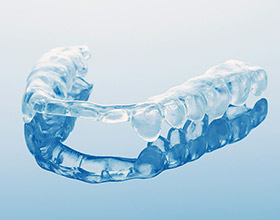
TMJ Therapy
If you are experiencing chronic jaw soreness or morning headaches associated with grinding or clenching your teeth during sleep, you may have a condition related to the temporomandibular joint, or jaw joint.
What is the Temporomandibular Joint (TMJ)?
There are two temporomandibular joints, with one located on either side of the jaw, just in front of the ear. The TMJ is made up of bones, cartilage, soft tissue, and nerves to form the connection between the jawbone and skull:
The end of the jawbone (condyle) fits into the skull depression (fossa) to form a ‘ball and socket’ joint.
A cartilage disc between the two bone structures provides a flexible surface for the condyle to glide and work with the facial muscles (like a hinge) to move the jaw. The TMJ disc is surrounded by fluid sacs that aid to cushion jaw movement and protect the joint.
The temporomandibular joints are considered to be the hardest working joints in the body. If you think about how often you move your jaw to speak, eat or yawn, you can certainly appreciate how the TMJs earn this reputation.
What causes TMJ pain?
Some patients have ongoing problems with TMJ pain due to a variety of factors. For some, persistent teeth grinding known as Bruxism, or teeth clenching can traumatize the joint and cause inflammation and pain.
Other patients may have defects in the joint structure or damage and inflammation caused by a systemic disease such as rheumatoid arthritis. This can lead to malfunction in joint movement and contribute to facial muscle strain and irritation of the tissues, nerves and cartilage around the TMJ. These conditions may result in a diagnosis of Temporomandibular Disorder (Dysfunction), or TMD.
Symptoms of TMJ disorder (TMD) include:
- Jaw joint or facial muscle pain when chewing
- Difficulty opening and closing the mouth
- Pain, popping or clicking in the jaw joint (not all jaw joint popping or clicking is a sign of TMD)
- Morning headaches or migraines
- Neck, facial and shoulder pain
- Problems with the way the teeth fit together
TMJ Disorder Treatment
Oral Appliance Therapy
Following a comprehensive dental examination, your Montgomery Dental Arts dentist may recommend oral appliance therapy for treatment and management of TMJ disorder.

The TMJ mouth appliance is worn to separate the teeth and alleviate the pressure and strain on the joint. Also called a nightguard or bite splint, the TMJ mouth appliance is often worn at night to protect the teeth and joints from teeth grinding (bruxism) or clenching, which most commonly occurs during sleep.
Other treatments that can alleviate TMJ pain include muscle massage, stress management, medications, and warm/cold compresses.
BOTOX® Frontline TMJ Orofacial Pain Therapy
BOTOX® Botulinum Toxin is an injectable medication that disrupts nerve to muscle communication. It has been used for years in medical procedures to limit muscle movement in pain management therapy and for treatment of migraine headaches. BOTOX® is also used in facial esthetics treatments to soften and improve the appearance of wrinkles and lines.
Dr. Dominique Shamburger has completed training in Frontline TMJ Orofacial Pain Therapy and administration of BOTOX® for TMJ pain symptoms and facial esthetics. Dr. Shamburger may recommend BOTOX® injections along with other treatment measures to alleviate facial muscle pain related to TMJ disorder.
TMJ Evaluation and Consultation
If you are experiencing jaw pain symptoms, teeth clenching, bruxism (teeth grinding), morning headaches or unexplained facial pain, we recommend that you schedule an appointment with our Montgomery Dental Arts dentists for a comprehensive dental examination and TMJ evaluation.